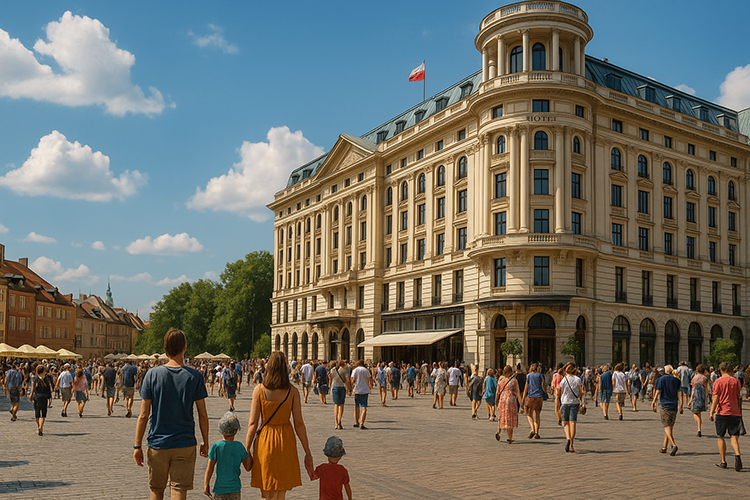2025-09-29
hospitality

Poland’s tourism sector delivered one of its strongest summer performances in years this July, welcoming 4.64 million tourists to accommodation establishments with at least 10 beds, according to the Central Statistical Office (GUS). This figure represents a sharp 27 percent increase compared with July 2024, when 3.65 million guests were recorded. Hotels remained the cornerstone of the industry, hosting 3.16 million visitors this July, up from 2.34 million a year earlier, while alternative accommodation such as guesthouses and rentals also absorbed significant demand. The rise in overnight stays mirrored this trend. Tourists spent a total of 13.76 million nights in Poland in July 2025, compared with 11.45 million a year earlier. Hotels accounted for 6.91 million of these overnight stays, an increase of nearly 1.75 million year on year. The average length of stay held steady at just under three nights, suggesting both stability and volume growth across the sector. A closer look at the figures reveals that the surge was driven largely by domestic travellers. In July, 3.64 million Polish tourists stayed in registered accommodations, compared with 2.65 million in July 2024. They also accounted for 11.45 million overnight stays, up from 9.18 million a year earlier. By contrast, foreign arrivals remained stable at around one million visitors, contributing 2.31 million nights, only slightly higher than the 2.27 million recorded in July 2024. While smaller in number, international visitors continue to play a crucial role in supporting Poland’s service exports and cultural industries. The strength of this year’s results points to several underlying trends. The year-on-year momentum highlights that Poland’s tourism industry has not only recovered from recent slowdowns but is undergoing structural growth. Domestic travel has clearly become the main driver of expansion, as households appear to be prioritising local holidays amid rising costs of foreign trips. At the same time, hotels have emerged as the chief beneficiaries of this surge, confirming the resilience of higher-standard accommodation and signalling opportunities for investors. The broader economic impact is also notable. Increased domestic travel spreads spending across regions, bringing benefits not only to major cities such as Warsaw, Kraków and Gdańsk but also to smaller towns and rural destinations. Restaurants, transport operators and cultural attractions are seeing stronger revenues, and this momentum is providing support to the wider economy in a year marked by inflationary pressures. Yet the rapid rise in visitor numbers also poses challenges. Growing demand raises questions about infrastructure capacity, environmental sustainability and balanced regional development. Popular tourist hubs face pressure on services during peak months, while policymakers will need to ensure that growth does not come at the expense of ecological and cultural resources. If August maintains July’s momentum, the summer of 2025 could set a new record for Polish tourism. The task for industry leaders and policymakers will be to harness the strength of domestic demand while keeping Poland attractive for international visitors. Balancing the benefits of growth with the need for sustainability will determine whether tourism can remain a long-term engine of economic development. Source: GUS

